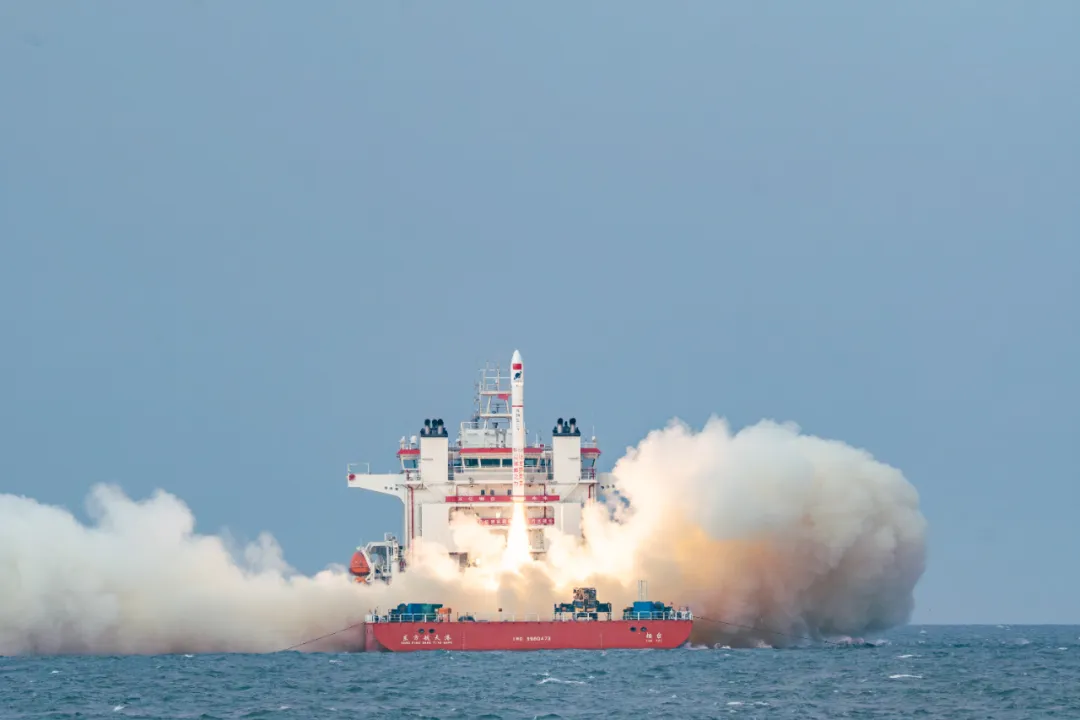At 16:12 Beijing time on May 29, 2024, under the organization and command of the Sea Launch Team of Taiyuan Satellite Launch Center, Galactic Energy successfully completed the 2nd launch mission of Ceres 1 Sea Launch - Sina Weibo Launch Vehicle (mission code: Beautiful World) in the sea off Shandong Province, and four satellites of the "Apocalypse" Constellation, 25 to 28, were successfully delivered into the 850km LEO.

The "Apocalypse Constellation" is a commercial low-orbit small-satellite communication constellation that has obtained the satellite communication frequency license and operated in a network in China, and will realize global coverage after completion, which can meet the demand for wide-area collection of massive data in the direction of the government, industry, individuals and other applications, and provide low-cost Internet of Things (IoT) information services, promote the technological upgrading of China's IoT information industry, and promote the industry's development and development. It can provide low-cost IoT information services, promote the technological upgrading of China's IoT industry, promote the rapid development of the industry, and has been widely used in forestry, agriculture, emergency response, tourism, water conservancy, electric power, petroleum, ocean, ecological environment, smart city and other industries as well as digital economy scenarios, and it is moving towards the direct connection of satellite market for cell phones, automobiles, walkie-talkies, wearable devices, emergency kits and other ToC consumer electronic products.
The "Apocalypse Constellation" 25 to 28 are the grouping satllites of the Apocalypse Constellation, which can provide global quasi-real-time short data transmission services. Since the first satellite was launched and operated in 2018, Guodian Hi-Tech has successfully deployed and operated 25 Apocalypse LEO IoT satellites.
Ceres 1 Sea- Launch Launch Vehicle is a product improved by Beijing Galactic Energy. Based on Ceres 1 Launch Vehicle to meet the adaptability of sea launches, a four-stage solid commercial launch vehicle with strong flexibility, good mission adaptability, excellent launch economy, etc., which can flexibly select the launch point and drop zone to meet the launch needs of various orbital payloads, and effectively solve the long-term concern of outsiders for the safety of drop zones In addition, it can provide high-quality and inexpensive launch services for all kinds of small satellites in medium and low orbits.
This mission is the second sea launch mission completed by Galactic Energy Company, and the sea area of the launch site was flexibly changed to meet the satellite orbit inclination requirements, which also marks that as the only private rocket type that can take into account both land and sea launch platforms, the Vulcan I series of carrier rockets has realized the flexible orbit adaptability and high-density launch capability, and is able to meet the launch needs of different satellite users to the greatest extent possible and quickly. It is capable of meeting the launch needs of different satellite users quickly and to the greatest extent possible.
The launch was supported by Sina Weibo, a social media platform, which is an innovative fusion of China's commercial spaceflight and social media platforms, demonstrating the two parties' firm conviction and vision to work together to promote the prosperous development of commercial spaceflight. In the future, Galactic Energy and Sina Weibo will carry out diversified cooperation in the ecology of aerospace science popularization content and KOL sound volume, leading the aerospace culture to a wider audience and creating a "beautiful world" for China's commercial aerospace industry.